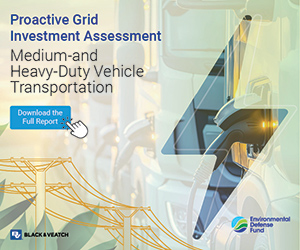Imagining a new construct – an independent system operator for the distribution network.
Farrokh Rahimi is Vice President of Market Design and Consulting at Open Access Technology International, Inc. (OATI), and holds a Ph.D. in Electrical Engineering from Massachusetts Institute of Technology (MIT). Before joining OATI in 2006, he collaborated with California ISO, for eight years, where he was engaged in market monitoring and design. Dr. Sasan Mokhtari serves as the Chairman of the Board, Chief Executive Officer, and President of Open Access Technology International, Inc. (OATI), which he founded in 1995 to provide software solutions for the deregulated energy industry.
The electric industry is undergoing a paradigm shift. Factors driving this shift include renewable resources, new technologies, demand-side participation, and a greater need for grid resiliency. The implications are inescapable, but are viewed differently by different stakeholders.

On one hand, regulators consider renewables, efficiency, and demand response as "preferred resources," blessed with beneficial impacts. Power system operators, meanwhile, may see these factors as "disruptive technologies" - threatening operational impacts at the distribution level, and possibly also in transmission.
At the center of this shift is the "prosumer" - a new market player we can define as a consumer who controls active, surplus generation resources available to inject power into the grid.
This increasing penetration of distributed, customer-side resources (think rooftop solar) will strike directly at the utility bottom line but, just as important, will add to requirements for system reliability. At a minimum, these changes give rise to new operational problems for operators of the distribution system. Utilities will need to extend their visibility to customer-side assets and revamp their conventional distribution system operational procedures and tools to maintain reliable system operations.
During the last round of industry disruption, as independent power producers cemented their takeover of whatever remained of the old utility monopoly in electric generation, regulators turned to independent system operators (ISOs) to manage the interface between IPPs and the wholesale grid. But these grid operators - also known as regional transmission operators (RTOs) or simply as "balancing authorities" (in regions lacking ISOs or RTOs) - have limited visibility and control over resources sited behind the meter.
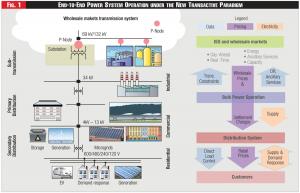 Figure 1 - End-to-End Power System Operation under the New Transactive Paradigm
Figure 1 - End-to-End Power System Operation under the New Transactive Paradigm
And so today, as begins the next wave of creative disruption, the time has come for a new operational model, this time to target not the interstate grid, but the local wires. The model we propose is a Distribution System Operator Construct,1 or DSO. In other words, an ISO for distribution.
For evidence of need for such a new construct, one need only note the recent action of the New York Public Service Commission, which in late April 2014 opened an unprecedented proceeding ("Reforming the Energy Vision") to rethink the central-station utility paradigm, and to consider redefining the local distribution utility more as platform that serves as an interface between various products, services, and market players, including prosumers. The state commission describes its new concept as the "Distributed System Platform Provider."2
As the New York PSC proposes, this new DSPP would become engaged in "actively managing and coordinating distributed resources and providing a market in which customers are able to optimize their priorities while providing, and being compensated for, system benefits."3
Under the new construct we propose here, the new DSO is intended to take on the responsibility for balancing supply and demand variations at the distribution level, and linking wholesale and retail market agents - all while maintaining the traditional role of the operator as a custodian for distribution system reliability. The DSO would interface between the bulk power system operator (Balancing Authority, ISO/RTO), on one hand, and the owners and/or operators of demand-side assets (e.g., Micro Grids, Building Energy Management System/BEMS operators, etc.) on the other.
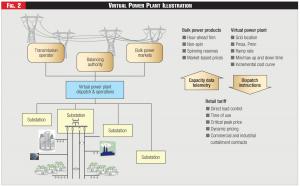 Figure 2 - Virtual Power Plant Illustration
Figure 2 - Virtual Power Plant Illustration
The interaction of the DSO with the bulk power system market operator takes place at the level of substations that are modeled and visible in the bulk power system operator's network model. The interaction of the DSO with demand-side assets and Distributed Energy Resources (DERs) can take various forms. Subject to regulatory approval, the DSO could possibly collect fees for the provision of various services such as bid matching services, facilitating retail markets, as well as aggregation services providing product to the wholesale markets, thus compensating for loss of retail revenues due to customer side generation or load curtailment. The DSO maintains full responsibility and authority for reliable operation of the distribution system when facilitating market-based transactions.
Demand-Side Challenges
Operationally, the emphasis on customer choice, emergence of Curtailment Service Providers,4 and operation of customer-side distributed resources gives rise to new operational problems for operators of the distribution system. Utilities need to extend their visibility to customer-side assets and revamp their conventional distribution system operational procedures and tools to maintain reliable system operations.
With increased levels of variable generation, bulk power system operators also face a number of new issues, including the need for higher levels of reserves, ramping requirements, and new types of balancing and flexible reserve services. They cannot solely rely on conventional (generation) resources to meet these requirements, as that would go against the premise of promoting environmentally friendly resources, and could be cost prohibitive. They must rely to some extent on demand-side assets to provide such services. However, aside from the fact that they may not have jurisdiction over such assets, their visibility to and control of demand-side assets may be limited, particularly when the products and services they need are to come from aggregates of large numbers of distributed assets. In addition, the bulk power operators cannot simply rely on economic incentives of Curtailment Service Providers to be aligned with the system reliability objective.
With the emergence of Microgrids, Building Energy Management Systems, Zero Net Energy (ZNE) buildings, and smart end-use devices, consumers with active resources are in a position to adjust their net consumption (or production) based on economic incentives. At present, there are some utility-based programs such as Critical Peak Pricing, Peak Time Rebate, Time-of-Use pricing and Dynamic Rates they can respond to. But the savvy prosumers (consumers with the ability to produce energy from their active distributed resources) are looking for more opportunities to increase the return on their investments. For example, some would like to be able to trade their excess generation with other Microgrids or prosumers. This has given rise to concepts such as Federated Microgrids or a new paradigm called "Transactive Energy."
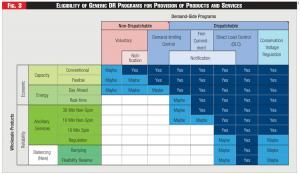 Figure 3 - Consumer PreferencesEligibility of Generic DR Programs for Provision of Products and Services
Figure 3 - Consumer PreferencesEligibility of Generic DR Programs for Provision of Products and Services
This notion of Transactive Energy has emerged to extend the conventional wholesale level trades of energy and energy derivative products to retail and end-use prosumers (Ref [1] and Ref [2]). The Transactive Energy Framework (Ref [3]) provides the context, usage, and main characteristics and underlying attributes of Transactive Energy. For the Transactive Energy paradigm to work effectively across the various layers of power system operation as well as among prosumers, the traditional role of the operator of the distribution system must be expanded to ensure it can effectively function as a reliability custodian to maintain distribution system integrity while facilitating transactive operations. (For references, see last page.)
Under our new construct, the DSO takes on some of the responsibility for controlling the imbalance variations within the distribution system, linking the wholesale and retail markets, and acting as a transactive agent among prosumers, while maintaining the traditional role of a custodian for distribution system reliability.
In short, the DSO construct we propose here will provide a venue to address the challenges posed by tomorrow's newly transactive distribution network, allowing different stakeholders to reap the benefits of emerging technologies.
Products and Transactions
With increasing demand-side participation, conventional power system operation with unidirectional power flow from bulk generation through transmission system to the distribution system and end-use consumers is changing. The same is true for the conventional unidirectional flow of information from the field equipment and user premises to distribution and transmission control system and unidirectional flow of payments from end-users to distribution, transmission, and generation entities. Under the new paradigm, power can flow out from consumer premises (under feed-in tariffs) to the grid; real-time or close to real-time information can flow towards customer premises (e.g., prices to intelligent end-use devices, or controls to dispatchable demand-side assets), and money can flow to the consumers (e.g., MicroGrids providing services to assist system operators.) Figure 1 illustrates the transactions among various layers along with flow of power, information, and funds.
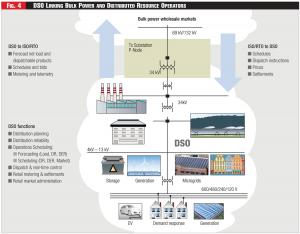 Figure 4 - DSO Linking Bulk Power and Distributed Resource Operators
Figure 4 - DSO Linking Bulk Power and Distributed Resource Operators
The transacted products may include not only power and energy, but also derivative products such as conventional ancillary services (spinning and non-spinning reserves, regulation, etc.) as well as new operating reserves such as flexible reserves (ramping, load following and balancing energy) needed to mitigate proliferation of variable generation. These derivative tradable products need not be provided only by conventional generation resources. Demand-side and distributed resources can be aggregated as Virtual Power Plants (VPPs) to provide these products.
The VPP concept is illustrated schematically in Figure 2.
Demand-side assets can be grouped together as VPP based on Demand Response (DR) programs, DR/DER asset characteristics (such as response time, controllability, etc.), location within the grid (substation, feeder section, distribution transformer connectivity, etc.), and customer/prosumer categories (residential, commercial, industrial, agricultural, etc.).
A VPP has similar characteristics to a conventional power plant except its parameters may depend on time of day, ambient conditions, and other factors such as provisions in the underlying DR programs (e.g., opt-in/opt-out). For example, the available capacity (Pmax) of a VPP comprising air-conditioning units registered under an A/C cycling program is high on a hot day and low on a moderate day.
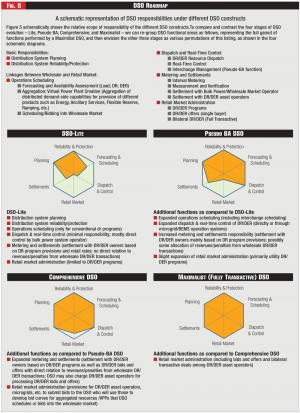 Figure 5 - DSO Roadmap
Figure 5 - DSO Roadmap
The products a VPP is eligible to provide also depend on DR programs and asset characteristics. Figure 3 schematically shows possible eligibility of assets enrolled in some known DR program types for provision of these services.
In the above chart, a "Yes" indicates that based on the generic DR program requirements, the corresponding VPP could potentially provide the indicated service. A "maybe" indicates whether or not the VPP can provide the service depends on other criteria such as asset characteristics, local regulatory provisions, etc. A blank means the generic DR program is not compatible with the provision of the indicated service.
The amount of energy, ancillary services or flexible reserves available from a VPP at any given time does not only depend on time, ambient conditions and asset response characteristics, but also on the distribution system topology, asset connectivity, power factor, and any other limitation that the distribution grid may impose.
Although the bulk power operators are the primary buyers/users of these services, they do not have enough visibility to the distribution grid to be able to determine how much of these services they can count on when deploying products from demand-side resources (VPPs). The operators of the distribution system are in a much better position to attain the required visibility and control to customer-side assets and to act as the agent facilitating interactions between bulk power operation/wholesale markets and distributed resource operators.
The following two examples illustrate the point (see Ref. [4] for more detailed discussion).
Example 1: Impact of DR Power Factor on DR Availability
Consider a 13.8 kV distribution feeder with 9 MW nominal load and unity power factor. Assume the load consists of 3 MW constant impedance, 3 MW constant current, and 3 MW constant power components.
Assume 10% of the load (i.e., 900 kW) is registered as DR, is constant power load with 0.8 lagging power factor (i.e., is a motor load). When the 900 kW DR is deployed, the effective load reduction is less than 900 kW since the remaining load will have a lead power factor, resulting in voltage increase and thus increase in the consumption. For example, if the voltage rises by 1.5% due to leading power factor of the remaining load, the constant impedance component will increase by 3% and the constant current component by 1.5%:
Constant impedance base load increase= 2 x 3,000 kW x 1.5%=90 kW
Constant current base load increase= 1 x 3,000 kW x 1.5%=45 kW
Constant power base load change=0 kW
Total base load increase=90 + 45 + 0=135 kW
Therefore, the amount of DR effectively delivered is: 900 kW - 135 kW=765 kW (rather than 900 kW)
The wholesale operator has typically no means of determining or controlling such reduction in otherwise available DR. However, the distribution operator can either adjust reactive power sources, if available, to restore the voltage to the nominal level, or take into account the voltage impact when determining DR availability.
Example 2: Impact of DR Phase Unbalance on DR Availability
Consider a distribution feeder with 9-MW phase-balanced load (3 MW on each Phase A, B, and C). Assume 10% of its load (i.e., 900 kW) is registered as DR, with 300 kW DR on Phase A, 270 kW DR on Phase B, and 330 kW DR on Phase C.
When the DR is deployed, since the initial load is phase-balanced, the remaining load will not be phase-balanced, and will thus lead to neutral currents. Excessive neutral current may trigger protection relays. Even if the resulting neutral current is below protection trigger level, it will result in neutral losses which reduce the effective DR. For example, if the increase in neutral current entails 30 kW of losses, the effective DR would be 870 kW (instead of 900 kW).
Bulk power operational decisions (including DR deployment) are based on the premise that the system is three-phase-balanced. This assumption breaks down when using distributed resources on individual phases. As illustrated, dispatch of aggregated distributed assets (VPPs) without due consideration of phase balancing can result in neutral currents, increased losses, and reliability degradation. The distribution operator is in a much better position to monitor and control such impacts.
The DSO Construct
The Distribution System Operator as defined here is an entity responsible for reliable operation of the distribution system (traditional role), while also providing demand-side services. As such, the DSO on one hand interfaces with the bulk power system operator (Balancing Authority, ISO/RTO) and on the other hand with owners and/or operators of demand-side assets (e.g., Microgrids, BEMS operators, etc.).
The interaction of the DSO with the bulk power system/market operator takes place at the substation level that is included in bulk power system operator's network model (e.g., Pricing Node, or PNode in the case of ISO/RTO markets). By mutual agreement with bulk power/market operators, this interaction can take place at the Aggregate PNode (APNode) level (e.g., Proxy Demand Resource, PDR , in CAISO market).
The interaction of the DSO with demand-side assets and prosumers can take various forms including conventional demand-side programs, direct control/dispatch of DR/DER assets, or facilitation of a retail market.
The DSO concept presented here is somewhat different from that popularized and used in Europe (Ref [5]). The European DSOs mainly operate the distribution wires and facilitate customer choice of primary energy providers in an Open Access Distribution System. The consumers and prosumers interact directly with the respective competitive retail energy service providers, who in turn may interact with bulk power and Transmission Service Operators (TSOs). As defined here, however, the DSO interacts directly with the Transmission Service Provider (e.g., ISO/RTO in centralized wholesale market environment).
The DSO as defined here may also perform services necessary to accommodate direct access energy service providers and Curtailment Service Providers (CSPs) where provided for by local, state, or federal regulations. In the discussion that follows, we concentrate on the nature and extent of the interaction of the DSO with the bulk power system/market operator. With no loss of generality, we also assume DSO operation occurs in a centralized market (ISO/RTO) environment. In areas where there are no centralized markets, the Balancing Authority will be the surrogate and the DSO-BA interactions are somewhat simpler.
Figure 4 shows the DSO as a link between bulk power/wholesale market operator and the operators of demand-side assets.
Depending on the extent and nature of DSO's interaction with the bulk power/market operator, on the one hand and the prosumers on the other hand, several flavors of DSO structure may emerge, as outlined below. In all DSO constructs discussed below, the DSO maintains its responsibility for reliable operation of the distribution system, but takes on additional responsibilities as stated under each DSO construct. Where other entities acting as Aggregators of Retail Customers (ARCs) or Curtailment Service Providers (CSPs) exist, it is assumed they will provide information and data necessary for proper scheduling and dispatch (including any ARC/CSP self dispatch) to the DSO as the distribution system reliability custodian.
Variations on a Theme
Our DSO concept is flexible. Different variations of the model can be envisioned, such as "minimalist," "maximalist," "pseudo," and "comprehensive."
The minimalist DSO (or DSO Lite) would act as an aggregator of demand-side resources based on conventional demand-side programs (Critical Peak Pricing, Dynamic Pricing, etc.). The demand-side participants simply register in pre-defined DR/DER programs. Their response is motivated by pre-defined incentives and penalties provided for the DR/DER programs. The DSO Lite's responsibilities in addition to conventional distribution planning, protection, service restoration, and other related "wires" services, would include:
• Forecast of both load and distributed generation at distribution substation and possibly feeder levels.
• Determination of available resource capability (distributed resource, dispatchable load storage, etc.) at distribution substation and possibly feeder levels.
• Aggregation of distributed demand-side capabilities for provision of different products (e.g., Energy, Non-spinning Reserve, Flexible Reserve, Ramping, etc.).
• Scheduling or offering aggregated demand-side resources (Virtual Power Plants) into the ISO/RTO market.
• Receiving scheduling and dispatch information from ISO/RTO and communication to demand-side asset operators.
• Monitoring of DR/DER asset responses.
• Measurement and Verification (M&V) with DR/DER asset owners.
• Settlement with ISO/RTO for provision of products and services to the ISO/RTO.
• Payment/charges to DR/DER asset operators and prosumers based on performance and predefined rate structure.
Under DSO Lite, while the DSO is responsible for provision of forecasts and assessment of DR/DER responses to ISO/RTO instructions, the direct control of dispatchable DR/DER assets may take place directly by the ISO/RTO. In other words, the DSO may act as a pass through agent for ISO/RTO dispatch instructions.
One of the shortcomings of the DSO Lite construct is the fact that the scheduling and dispatch of DR/DER resources is done without consideration for their impacts on the distribution grid. For example, bulk power operators generally deal with three-phase balanced (positive sequence) networks. Depending on the location of DR/DER assets on the distribution grid and their concentration of various circuit phases, this may result in reliability issues such as phase unbalance and increased losses, as well as over/under voltage and equipment loading issues.
Under the DSO Lite construct, the responsibility of forecasting DR/DER capabilities is with the DSO. The DSO is to perform the forecasting bottom up: Forecasting DR/DER capabilities at lateral or feeder level and aggregating, using grid topology, to determine forecast at various levels and nodes of the system. Contrast this model to the traditional methods of forecasting employed by bulk power operators where system load is forecasted and is then distributed to individual grid nodes using Load Distribution Factors (LDF). With the variability and unpredictability of the active distributed resources, LDFs will in reality be much more volatile. The distribution system operator is in a much better position to forecast such nodal level net consumptions.
A slightly different form of DSO Lite, which we call a "Pseudo Balancing Area DSO," would perform all of the functions of the DSO Lite, but would additionally be responsible for controlling the imbalance within the DSO footprint, and exercise direct control of dispatchable DR/DER assets. Under this construct, the ISO/RTO would not have direct control of DR/DER assets. The interface of the DSO and the ISO/RTO for information exchange, control, M&V and Settlements is the PNode and APNode. The DSO is responsible for delivery of the dispatched quantities to the ISO/RTO at the PNode or APNode level. In this sense, the relationship between the ISO/RTO and the DSO is similar to a Pseudo Balancing Area (or a Metered Subsystem in CAISO jargon). The DSO will make DR/DER capabilities available to the ISO at the PNode (or APNode) level. The DSO will be responsible for controlling the individual assets that comprise the aggregate. The DSO will schedule and dispatch DR/DER assets with full consideration of their impacts on the distribution grid, mitigating any otherwise potential degradation in the reliability of the distribution grid.
Under the Comprehensive DSO construct the DSO function will expand beyond that of a Pseudo BA DSO. The interaction of the DSO and the DR/DER asset operators may expand beyond conventional DR/DER programs. The DR/DER asset operators may offer their DR/DER asset capabilities to the DSO, based on which the DSO may construct offer curves for the aggregated assets it offers into the ISO/RTO market. The DSO may in return charge a fee to the DR/DER asset operators. This also expands the extent of settlements functionality of the DSO to allocate charges and credits to DR/DER asset operators not only based on performance, but also based on the DR/DER bids and offers to the DSO.
By contrast, the Maximalist DSO construct is envisioned as a possible future expansion of Comprehensive DSO functionality. The Maximalist DSO function may include facilitation of a retail DR/DER market. Under this construct, the DSO is no longer the single buyer of DR/DER capabilities. The DR/DER asset operators can engage not only in submitting bids and offer to the DSO, but also in bilateral arrangements among themselves. This is the ultimate construct in which the "Transactive Energy" model prevalent in wholesale markets is extended to the retail domain. In its role as the operator of the distribution system, the DSO is still responsible for secure operation of the distribution system and will have to maintain reliable system operation while facilitating such retail transactive market.
The Future is Transactive
Transactive techniques have been used in bulk power operation and trading in the U.S. since the mid-nineties. Although restructuring had as its main goal customer choice and reduced cost to consumers, the demand-side was still for the most part passive.
GridWise Transactive Energy Framework [Ref.3] defines Transactive Energy as "A set of economic and control mechanisms that allows the dynamic balance of supply and demand across the entire electrical infrastructure using value as a key operational parameter."
This definition emphasizes the balance of supply and demand based on "value" without explicit reference to temporal and geographical aspects that may determine or modify the "value." In reality, the term "transactive" emphasizes the notion of a "transaction" as a basis for exchanging information regarding quantity, value, time, and location. Since electric energy is an instantly perishable product, whether trades are physical or financial, they reflect the expected worth of energy when it is eventually produced or consumed. In forward time frame trades are primarily financial, but the closer they get to real-time delivery, the more the physical deliverability aspects come into play.
With the advent of smart device technologies and emphasis on smart grid operation the role of demand side participation in retail markets is changing from passive or submissively active to proactive. The notion of Transactive Energy primarily involves extension of trading to end-use consumers. Thus, the DSO construct discussed here will provide a roadmap for the gradual extension of the transactive framework from wholesale to retail - and to end-use prosumers. The maximalist DSO embodies a full convergence.
Endnotes
1. U.S. Patent Pending. Oapen Access Technology International, Inc. All rights reserved.
2. See, NY PSC Case 14-M-0101, Order Instituting Proceeding, Apr. 25, 2014.
4. Curtailment Service Provicers (CSPs) are also known as Aggregators of Retail Customers (ARCs).
References
[1] Farrokh A. Rahimi and Ali Ipakchi, "Transaction-based Techniques for Bulk Power Operation under the Smart Grid Paradigm", IEEE Smart Grid Newsletter, September 2011
[2] Farrokh A. Rahimi and Ali Ipakchi, "Transactive Energy Techniques: Closing the Gap between Wholesale and Retail Markets", Electricity Journal, Vol. 25/8, November 2012 (pages 29-35)
[3] GridWise Transactive Energy Framework (Draft Final), Prepared by The GridWise Architecture Council; October 2013
[4] J. Medina, N. Muller, and I. Roytelman "Demand Response and Distribution Grid Operations: Opportunities and Challenges", IEEE Transactions on Smart Grid, Vol. 1, No. 2, September 2010 (pages 193-198)
[5] The Role of Distribution System Operators (DSOs) as Information Hubs, EURELECTRIC Networks, June 2010
Article image (c) Can Stock Photo



